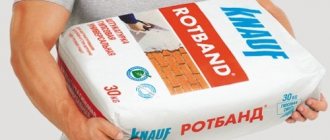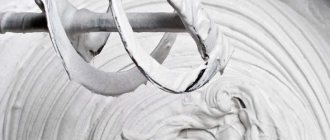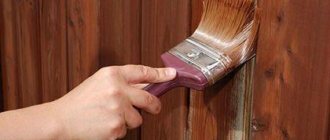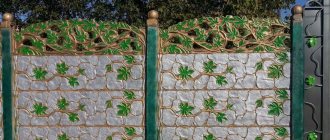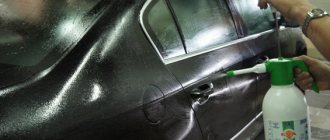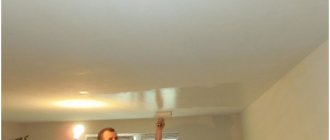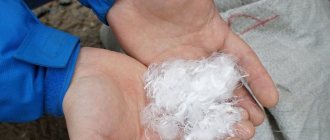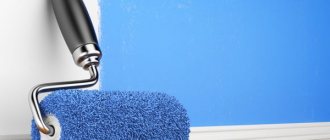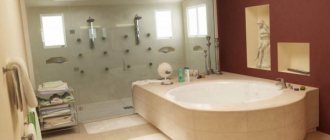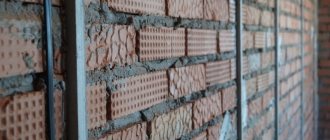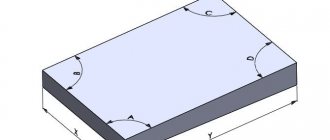Currently, various devices are used to furnish premises and other structural elements. This is necessary in order to significantly extend the service life of the device. As a rule, various materials can be used for arrangement, but particular preference is given to putty, since it is the easiest to work with and has all the necessary properties and characteristics. In this case, it will be necessary to study in more detail what such a finishing option as fiberglass for putty is, as well as the procedure for application and characteristics.
Purpose and application
This type of finishing work, where fiberglass is used under putty, significantly contributes to the durability of the structure. This finishing principle allows the following:
- Significantly extend the service life of any structural element where such arrangement is provided.
- This type of work allows you to cover the joints and places where the structural contours of the material have formed.
- This type of finishing eliminates the possibility of moisture and other harmful factors penetrating the surface.
- The adhesion of the putty directly to the surface of the structure increases significantly.
- This type of arrangement allows you to eliminate all existing unevenness on the surface, making it smooth.
- This arrangement allows you to significantly save on the materials used for work.
In general, it is customary to use fiberglass for putty not only when arranging the interior of a building, but also for structural elements located on the street. The presence of such a mixture can significantly extend the service life, and also give an attractive appearance to any device.
Important. When carrying out work, a certain supply of material should be provided so as not to subsequently encounter certain difficulties and the need for combination.
Composition and technical characteristics
In this case, we are talking about the natural composition of the device, which provides the necessary protective properties for the finished surface of the structure. As a rule, the following common components are used in the production of fiberglass:
- first of all, it is necessary to highlight the presence of the necessary glass fiber, which allows you to achieve certain results and properties;
- there are also special polymer additives that help strengthen this material;
- Separately, we should highlight the presence of other pigments in the composition, which set the shade during the production of canvas;
- In addition, the required amount of glue is used here to tightly adhere all components and form a canvas.
The material itself is highly durable. The products are characterized by low weight. The devices significantly increase adhesion to the surface. These elements are highly resistant to moisture and other atmospheric phenomena.
Important. In this case, the consumption of glue during production is related to the characteristics of this multi-component substance, which covers the surface of the structure for proper protection and adhesion.
Characteristics of Oscar glue for fiberglass
According to numerous reviews, it is better to glue fiberglass with Oskar, a water-dispersed acrylic adhesive that contains PVA, latex, modified starch and antiseptic additives. The glue can be presented in the form of a dry powder, which is easily diluted with cold water without forming lumps, or a ready-made composition.
The finished mixture is frost-resistant, so it can be stored at a temperature of 50 ° C for 1 month. After the 5th defrosting, the composition will not be suitable for use. Ready-made glue is produced in buckets with a capacity of 5 and 10 liters. Stored unopened for up to 3 years. You can buy glue for Oskar fiberglass from 500 rubles. The dry composition is stored for up to 2 months. It is produced in bags of 1 and 10 kg, cardboard packages weighing 200 and 400 g. The cost of the smallest packaging is about 200 rubles.
The product is applied to the surface to be decorated. Thanks to the elastic base, the position of the canvas can be easily adjusted until the glue dries. The mixture contains antiseptic additives that prevent the formation of mold, mildew and pathogens. The composition is environmentally friendly. It has no odor, is a non-flammable, non-flammable, explosion-proof mixture. The glue has good breathability.
Oskar fiberglass adhesive has many positive reviews.
The composition is characterized by economical consumption, which is 350 g per 1 m² of fiberglass. After complete drying, Oskar glue becomes completely transparent. It provides high bond strength due to good adhesive properties. You can stick high-density fiberglass on it, which will not sag or fall off over time.
Note! Oskar glue can be used not only for painting fiberglass, but also for paper, non-woven and fiberglass wallpaper.
Advantages and disadvantages
There are a number of advantages of such a device, but there are also some disadvantages. Let's take a closer look at the main advantages of this building element:
- First of all, environmental safety should be highlighted, since only natural ingredients are used;
- this composition is characterized by increased strength and wear resistance under any mechanical stress;
- this option is practically not affected by temperatures, which is why it can be used at any thermometer reading;
- the substance does not accumulate static electricity, which is why various dust does not settle on the coating;
- can be used as a reinforcing composition, and in addition is harmless to humans and does not cause allergies;
- prevents the formation of mold and mildew on the surface after complete installation.
Despite the large list of advantages, there are also some disadvantages. This finishing option has a separate cost. Additional effort will be required for finishing. The time required to arrange the structure increases significantly.
Peculiarities
In this case, there are a number of nuances that must be taken into account when working with this substance. In practice, the following features should be taken into account:
- this device needs to be applied correctly to the surface (it is important to adhere to all rules of use);
- due to the hardness of the substance, it should be applied with a roller in order to evenly and correctly arrange the surface;
- after it dries, the surface will need to be sanded to prepare the putty solution for application;
- fiberglass has the necessary properties to protect the structure, however, when using it, additional finishing work is necessary.
In order to properly carry out the arrangement, you will need to correctly select and use the tool necessary for finishing, otherwise a positive result and the desired effect will not be achieved.
Tool selection
In order to properly cover a structure, you will need to select the necessary tools for the job accordingly. As a rule, in such situations, a roller or a brush with natural bristles is used, which allows you to evenly cover the prepared surface. Subsequently, grinding is carried out, for which an appropriate machine is used, you can use a drill with a diamond disc or sandpaper. After this work is completed, putty will be applied using a putty knife, brush or roller. Additionally, at the final stage, the last layer can be applied with a paint sprayer. At the final stage, stripping or additional sanding is carried out.
Important. Using a special grinding machine significantly saves time, since sandpaper or a drill with a diamond blade requires more effort.
Installation of the reinforcing layer
It is not difficult to apply putty using fiberglass before painting with your own hands. The main thing is to follow the sequence:
- Gluing fiberglass begins with putty and leveling the walls. For this, PVA-based or oil-based putty is used. The walls are puttyed in a layer 2–4 mm thick. Large cracks and corners are glued with sickle before puttying. The surface must dry, then it is rubbed with coarse sandpaper.
- Dust and dirt are removed from the walls before painting. The cleaner the walls are, the better the fiberglass will adhere.
- The adhesive should be applied to the wall, from the corners. The width of the spread layer is slightly larger than a roll of fiberglass.
- The fiberglass is rolled to the wall and cut from the bottom using a utility knife.
The walls should be covered in such a way that the fiberglass joints do not overlap the putty seams. The material is glued end to end. Excess air under the fiberglass is expelled using a wide spatula or rubber roller. Don't overdo it; raw fiber breaks and stretches easily.
Important! The walls should dry out within 1–2 days, but it is not recommended to ventilate the room.
Photos are enlarged, click!
Recommendations for choosing fiberglass
In order to rationally select the appropriate finishing material, it is necessary to take into account the following points:
- first of all, you will need to select the appropriate option for external or internal finishing work;
- the manufacturer who produces such products and sells them should be taken into account;
- it is necessary to take into account the surface structure, and in addition the required level of adhesion for subsequent puttying;
- the protective properties present are taken into account, as well as the cost of the purchased coating.
Taking into account all these nuances, it is possible to rationally make a choice in favor of a specific coating for the appropriate treatment of the structure before laying a layer of putty.
How to build a work process correctly
To rationally arrange a room or external structural elements, it is necessary to correctly construct all the upcoming work. Typically, the process looks like this:
- The required amount of all material is purchased in advance (it is advisable to buy with a reserve).
- The next step is to fully prepare the surface for gluing fiberglass under putty.
- Next, the covering of the structure is arranged using a certain technology.
- At the final stage, a finishing coat of putty is performed on the entire prepared surface.
In theory, the whole procedure looks quite simple, but in practice you can encounter a number of difficulties when carrying out work on arranging premises or other structural elements.
Important. When choosing appropriate materials, it is advisable to purchase the most compatible arrangement options for a specific type of work.
Preparatory stage
Here the necessary algorithm of actions is performed to clean the surface from construction debris, as well as any dirt and dust present. In addition, all existing major irregularities are eliminated. Immediately before using the fiberglass, the surface should be moistened with water to remove all remaining dust present on the coating.
Installation of the reinforcing layer
In this case, we are talking about the use of purchased fiberglass. Here, uniform pasting of the entire surface is carried out, starting from the very edge (from the corner). When carrying out work, you should not skimp on the adhesive composition, since the material has an impressive weight. All individual sheets are mounted end to end without any overlap. Subsequently, uniform leveling is carried out using a roller or brush from the bottom corner to the very top of the individual structural element. After complete gluing, grinding of the surface may be required.
Applying the finishing coat
Here we are talking about puttying. To do this, use a roller, brush, or construction spatula. The mixture is applied in even layers to the surface, with each individual coating completely dried. The end result should be a flat surface where the final coat of putty can be applied using a paint sprayer. Subsequently, all you have to do is scrape or grind to remove excess material present from the finished surface.
Important. This arrangement already has all the necessary properties, however, for the best result, the coating can be subjected to subsequent painting.
The use of fiberglass on walls for painting
Before gluing the “cobweb”, the walls must be plastered, puttied with a rough layer of putty and sanded. If there are large cracks, they must be embroidered, additionally glued with paper tape or sickle tape and filled with strong putty.
On plasterboard walls, it is imperative to glue and putty the seams, and seal the holes from the screws. The walls must be primed with a deep penetration primer. The material can also be used as a base for decorative or Venetian plaster.
Rules for gluing
Fiberglass is glued end-to-end, starting pasting in the direction “away from the light”.
As with wallpapering, drafts and sudden changes in humidity should be avoided!
When working inside one room, it is advisable not to take long breaks; when pasting one wall there should be no breaks at all.
Technique
Tools needed for gluing:
- Construction knife.
- Roulette.
- Plumb or level.
- Roller and brush for applying glue.
- Wallpaper roller or spatula.
The “cobweb” can be cut to size according to the height of the room, or it can be glued by unwinding the roll along the wall, cutting it in place.
Fiberglass has a front and a back side, it is important not to confuse them. The reverse side is more fleecy, for better adhesion to the base.
When gluing, apply glue directly to the wall; it is better to use a special composition for glass wallpaper or fiberglass. Other brands of glue will not work, because... not designed for heavy loads and adhesion to fiberglass. The canvases are glued strictly vertically, the first one is glued at a distance from the corner slightly less than the width of the canvas, the subsequent ones are glued end-to-end.
The glued fiberglass canvas is carefully smoothed with a roller or wallpaper spatula, the first canvas - in a herringbone pattern from the middle, the subsequent ones - from the joint, expelling excess glue and air bubbles. Particular care should be taken to glue the joints of the canvases, because... When painting, poorly taped joints will separate. If the corners of the room are plastered and puttied evenly, you can start gluing the wall directly from the corner.
There should be no untaped areas!
Safety regulations
Since the material is made from fiberglass, tiny glass chips are formed during operation.
It is not dangerous, but can cause irritation to the skin, mucous membranes and respiratory tract, so it is recommended to work in long sleeves, gloves and a respirator.
No fiberglass dust will be generated after painting or priming.
Tips and recommendations for use
To obtain a high-quality and positive result, it is recommended to follow some advice from experts and manufacturers of similar materials:
- For joint use here, you should choose universal putty options for covering walls.
- Grinding of fiberglass is carried out to eliminate possible irregularities and ensure full adherence to the surface.
- It is recommended to use high-quality material that has the necessary compatibility.
- Here all processes should be carried out in stages after each individual coating has completely dried.
- For high-quality and reliable protection, applying two medium layers of putty to the surface will be sufficient.
- It is not recommended to purchase the cheapest and least known products for arrangement and decoration.
Taking into account a number of these recommendations, you can rationally decorate a certain room or external structural elements.
What is fiberglass?
Like glass wallpaper, “spider web” is made from fiberglass and special organic resins, but in a slightly different way. In glass wallpaper, fiberglass is woven on a loom, while fiberglass is pressed in a special way, the production process is more similar to paper making, resulting in a smooth surface.
Application area
Painting fiberglass is used in finishing work when preparing walls and ceilings for painting; it helps to hide minor surface defects, for example, shallow scratches from sanding with coarse sandpaper. The “web” also strengthens the base, preventing the appearance of cracks due to shrinkage or movement of the base.
Fiberglass is a non-flammable, environmentally friendly material, “breathable”, i.e. permeable to moisture, at the same time not afraid of wet cleaning, which allows it to be used in the decoration of any premises, including residential, children's, preschool and medical institutions. Fire resistance allows this material to be used for finishing fire escape routes.
Brands of fiberglass presented on the domestic market:
- Swedtex (Sweden).
- Schuller (Germany).
- Wellton and Oscar (Sweden, Germany).
- GM Glassmaster (Germany).
- Baumax (Germany).
- Vitrulan (Germany).
- FinTex (Finland).
- FitGlass, Holtex (Finland).
- Nortex (Holland).
- IN-TEX (Czech Republic).
- "Esta" (Czech Republic).
Characteristics
The main parameter by which fiberglass is divided is density. It varies from 20 to 65 g/m2. For gluing the ceiling, it is recommended to use a “cobweb” of minimum density, and for walls – medium density. Dense materials withstand mechanical loads better.
Fiberglass is produced in rolls 1 meter wide and 25 or 50 meters long.
Painting the surface after puttying
This option of finishing work is not mandatory, but it can even more significantly increase the service life of the finished coating. Here you have to apply 2-3 layers of dye, and for such an arrangement it is not necessary to strip or sand off excess putty. To apply paint, the layers of putty must be completely dry. In this case, a roller or brush is used for work, and it is recommended to apply the final layer with a spray gun, which will allow you to achieve an optimal result.
Important. Such multi-component finishing of the structure will significantly increase the service life of the structure, and in addition give it an attractive appearance.
Advice from professionals
To ensure high-quality painting, you need to follow these tips:
- After gluing, it is better to strengthen the fixation of the fiberglass. The glue is diluted with water to a liquid state. It treats the entire surface from above.
- Particular attention is paid to surface preparation. The service life and external characteristics depend on this. If you have no experience in such work, it is better to hire workers.
- The process does not require rush. The work is done carefully and efficiently.
- To obtain a glossy surface, latex-based paint is required.
- The glue can be a special composition for fiberglass. It contains antiseptics to prevent mildew and mildew.
- When choosing dry glue, you must follow the preparation instructions. It's on the package. Users prefer the compositions Bostik, Wellton, Oscar, Pufas.
Having instructions on how to paint fiberglass, you can do everything yourself. This is a great way to decorate rooms. You need to choose the optimal density of fiberglass, stick it on well and enjoy the work done.
